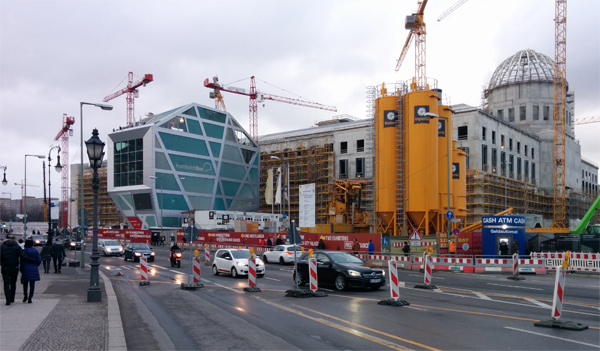
03,04,06.2016
The diversity in attitudes towards “historical” buildings in Berlin is wide. Some of this difference can be attributed to a temporal/critical distance between the structure’s original or last use and a critical juncture of decision. It may seem that the time period preserved is the one deemed most important, representative or usually least problematic. Moreover, as both East and West Germany were quickly able to take moral stands against the Nazi past, it can sometimes be these Third Reich buildings which are preserved. In contrast, attitudes towards Berlin’s Cold War divisions are more nuanced as the East was enveloped by the West.
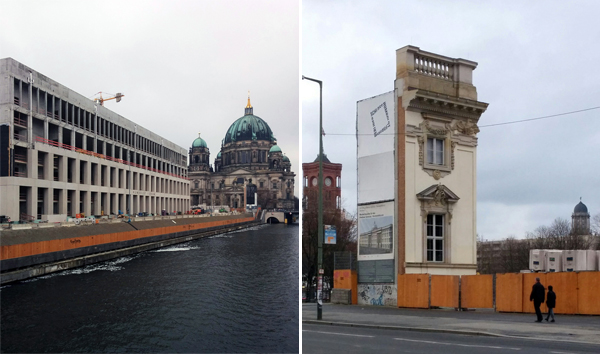
The Humboldt Forum | Berliner Schloss
The Humboldt Forum for example is partly an exact facade replica of the Berliner Schloss (the side facing the Lustgarten, rather than the Spree facade which is being replaced by a Chipperfield-esque grid). This reproduction points at the historical texture some were trying to recapture, as well as the revulsion of many to the Soviet Palast der Republik which later stood in that spot and was found full of asbestos. It can also be seen as retribution for the GDR’s removal of the imperial Palace in the first place. [1]
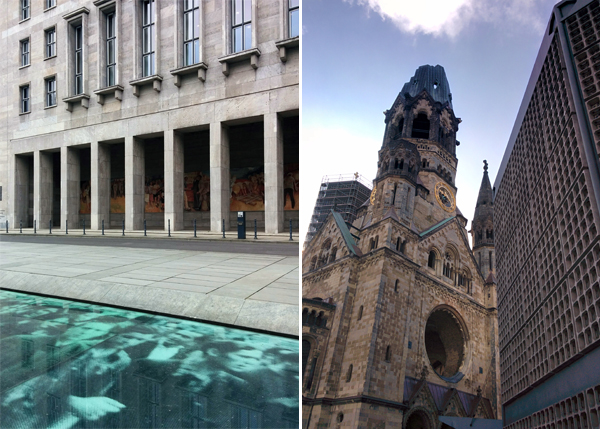
Former Nazi Aviation Ministry with memorial for the East German uprising of 1953 | Kaiser Wilhelm Memorial Church
This need to quickly flatten a strong representation of the losing side doesn’t happen always, of course. The headquarters for the Reichs Ministry of Aviation is today the German Ministry of Finance, but in the interim housed various GDR bodies including the House of Ministries. Possibly it was saved by the simple fact that it was standing after the war, and then by the passage of time which allowed its new use to be vital, and its former character more distant.
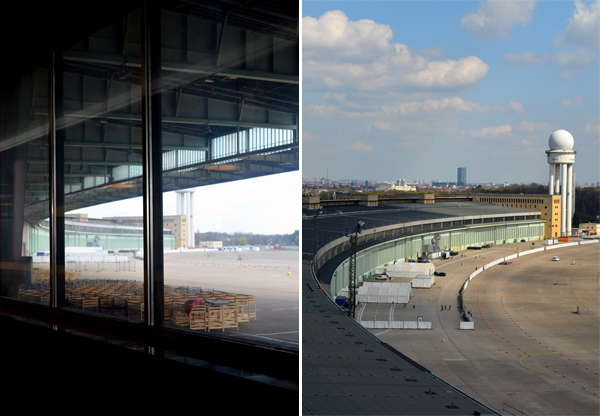
Tempelhof with beds and tents for refugees
Tempelhof Airport is an excellent example of a Nazi building the was quickly taken over and successfully repurposed, in this case by the American military for many years (critically as part of the Berlin Airlift which must have endeared it to the general population) before becoming part of Germany’s aerial infrastructure. Today the airfields have been converted to a public park and the building surprisingly represents the welcoming attitude of many Germans towards refugees pouring into Europe, where other countries have taken more reactionary stances. Interestingly, it is a refugee way-station already relatively centrally located in the city with utilities provided. [2] The significance of what was once one of the world’s largest buildings and built by the Nazis now sheltering Syrian refugees is certainly a symbolic coup.
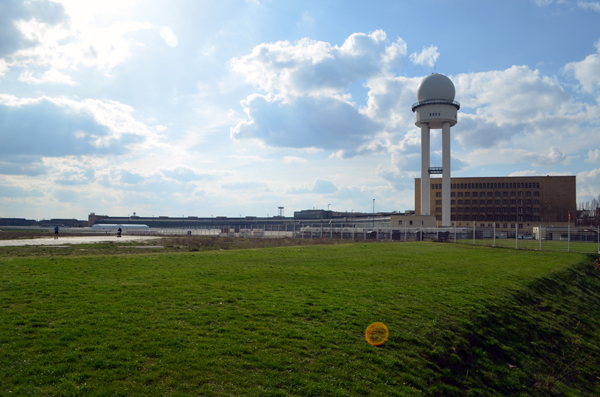
Tempelhof Field
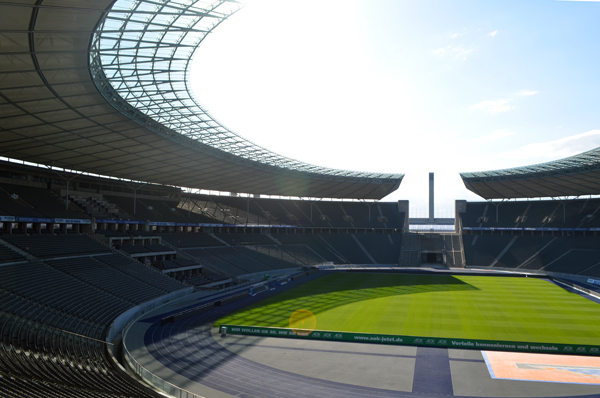
The Olympic Stadium with contemporary awning
1. See Ghosts of Berlin by Brian Ladd for an excellent account of the history of this site.
2. The Olympic Stadium in West Berlin, another Nazi landmark sometimes allows schools to use its practice facilities for physical education as many school gymnasiums are also given over to housing refugees.